A pellet stove’s efficiency in producing heat is paramount for creating a warm and comfortable living space. Understanding how to make your pellet stove burn hotter can significantly enhance its performance.
When a pellet stove operates at its full potential, it not only elevates the comfort of your home but also contributes to cost-effective heating solutions.
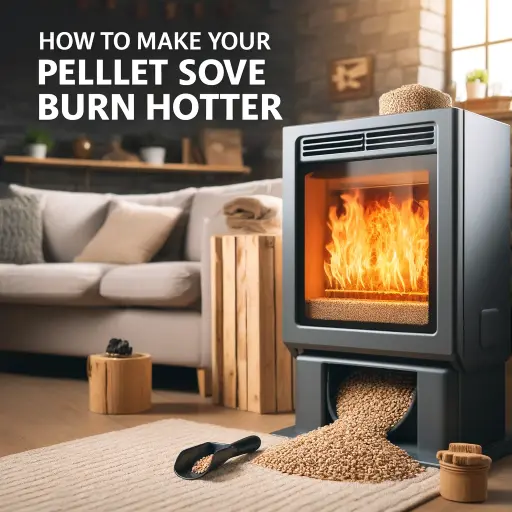
By optimizing its performance, you can reduce energy consumption and lower heating bills, making it an environmentally conscious choice.
To achieve a hotter burn, it’s imperative to grasp the pivotal elements that impact a pellet stove’s performance. From the type of pellets used to the maintenance routines and airflow dynamics, each factor plays a crucial role in determining how efficiently the stove converts pellets into heat.
By gaining insights into these key aspects, you’ll be equipped to make informed decisions and implement effective strategies for a more efficient and warmer living space.
In this guide, we’ll delve into the crucial aspects that influence a pellet stove’s effectiveness in burning hotter and more efficiently.
How to Make Your Pellet Stove Burn Hotter
Optimal Pellet Selection
Choosing the right pellets is the first step to ensure your pellet stove burns hotter and more efficiently.
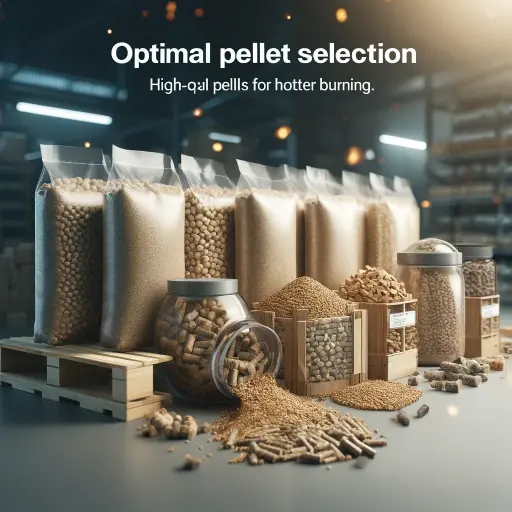
Here’s what you need to know:
Types of Pellets for High Heat Output
- Hardwood Pellets: These are dense and can provide a high amount of heat due to their compact composition.
- Softwood Pellets: While they burn slightly faster, they can still offer excellent heat output.
Identifying Quality Indicators
Look for these signs to ensure you’re getting high-quality pellets:
- Low Ash Content: High-quality pellets produce less ash, which means more of the pellet is converted into heat.
- Consistent Size and Shape: Uniform pellets burn more efficiently.
- Minimal Dust: Dusty pellets can clog the stove’s feed system.
Hardwood vs. Softwood Pellets
- Hardwood: Burns slower and hotter, making it a great choice for high heat output.
- Softwood: Burns faster, but can still provide substantial heat. It’s often more readily available.
Pellet Stove Maintenance
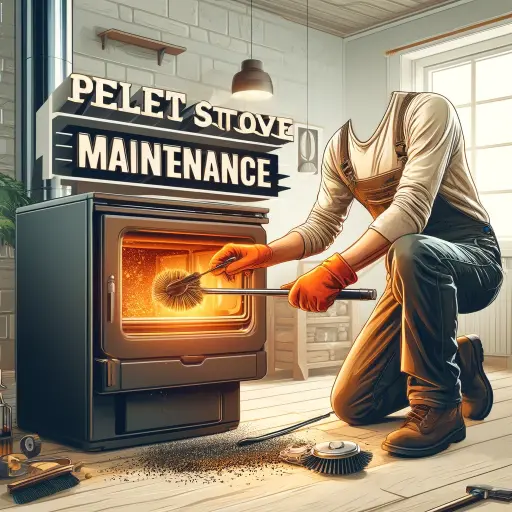
Regular maintenance is crucial for keeping your pellet stove in top shape. Follow these steps:
Cleaning Routines
- Clean the Burn Pot: Remove ash and residue regularly for efficient burning.
- Clear Ash Traps: Ensure ash traps are clean to maintain proper airflow.
- Inspect the Exhaust Pipes: Check for any obstructions or buildup that could hinder performance.
Importance of Regular Cleaning
- Enhanced Efficiency: A clean stove operates at its best, ensuring maximum heat output.
- Preventing Blockages: Regular cleaning prevents blockages that can lead to uneven burning.
Inspecting and Replacing Components
- Inspect Gaskets and Seals: Worn-out gaskets can lead to air leaks, affecting burn efficiency.
- Check Motors and Fans: Ensure they’re functioning properly for optimal air circulation.
- Replace Worn Parts: Promptly replace any components showing signs of wear and tear.
Airflow and Ventilation
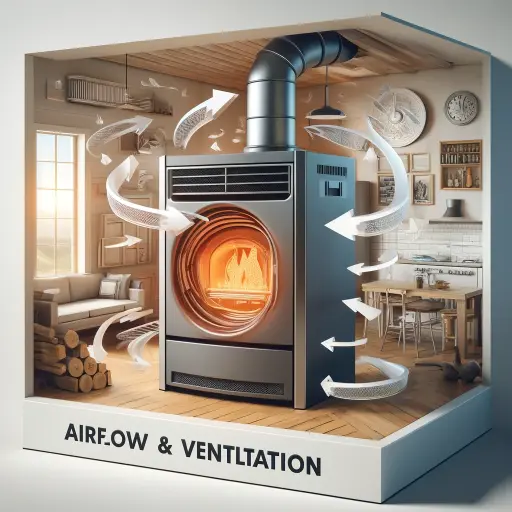
Understanding the role of airflow in a pellet stove
- Crucial Component: Airflow is essential for combustion in your pellet stove. It provides the oxygen necessary for the pellets to burn and generate heat.
Adjusting damper settings for improved combustion
- What’s a Damper?: The damper controls the airflow. By adjusting it, you can regulate the intensity of the fire.
- Balancing Act: Finding the right balance ensures efficient burning and more heat.
Ensuring proper ventilation for optimal burning conditions
- Ventilation Matters: Adequate room ventilation is vital for the stove to operate effectively. It ensures a steady supply of oxygen and helps with proper combustion.
Air Intake Adjustment
Step-by-step guide to adjusting air intake settings
- Locate the Intake Control: Learn where it is on your stove. Usually, it’s a knob or lever.
- Start Slowly: Make gradual adjustments to find the sweet spot.
- Monitor the Burn: Keep an eye on the flames to gauge the effect of your adjustments.
Finding the right balance between air supply and burn intensity
- Avoid Overloading: Too much air can lead to rapid, inefficient burns.
- Avoid Underloading: Too little air may cause smoldering and reduced heat output.
Avoiding overloading or underloading the stove with pellets
- Proper Loading: Fill the hopper according to your stove’s capacity, and avoid overloading it.
- Optimal Burn: Correct pellet placement ensures even burning.
Balancing airflow and adjusting the air intake is key to maximizing the heat generated by your pellet stove.
Keep an eye on ventilation and pellet loading to maintain an efficient burn. This way, you’ll enjoy a warmer and more cost-effective heating experience.
Read Also: How to Fix a Smoking Stove?
Positioning of Pellets
Proper pellet placement techniques for maximum heat production
- Even Distribution: Spread pellets evenly across the burn pot for consistent burning.
- Avoid Piling: Avoid creating mounds of pellets, as this can hinder airflow.
Creating a balanced pellet bed for consistent and efficient burns
- Level and Compact: Ensure pellets form a level bed, compacted enough for steady combustion.
- Avoid Gaps: Fill any gaps to maintain an even burn.
Ignition Techniques
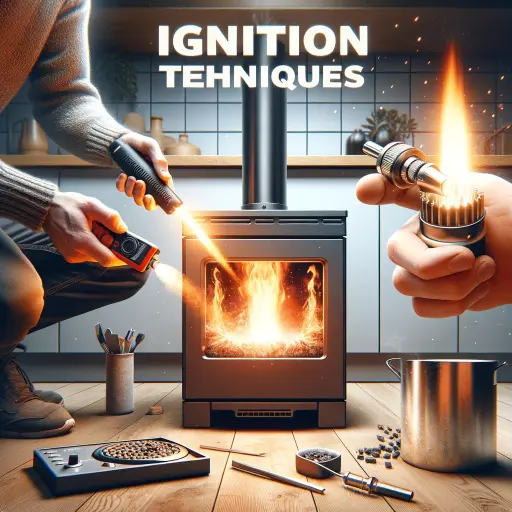
Preparing the stove for ignition
- Clear the Burn Pot: Ensure it’s free of any debris or ash for a clean start.
- Check Airflow: Ensure proper airflow to facilitate ignition.
Exploring different ignition methods for hotter burns
- Electric Igniters: Quick and efficient, these provide a reliable start.
- Gel Fire Starters: They offer a steady flame for igniting pellets effectively.
- Hot Start Ignition: Using already burning pellets to ignite fresh ones for a hotter initial burn.
Troubleshooting ignition issues for a reliable start
- Check Power Supply: Ensure the stove is receiving power for electric igniters.
- Inspect Fuel Feed: Ensure pellets are feeding correctly into the burn pot.
- Clean Ignition Components: Remove any residue that may be hindering ignition.
Understanding how to position pellets and ignite them effectively is essential for achieving a hotter burn.
Follow these techniques to ensure a reliable start and consistent heat production from your pellet stove.
Insulation and Sealing
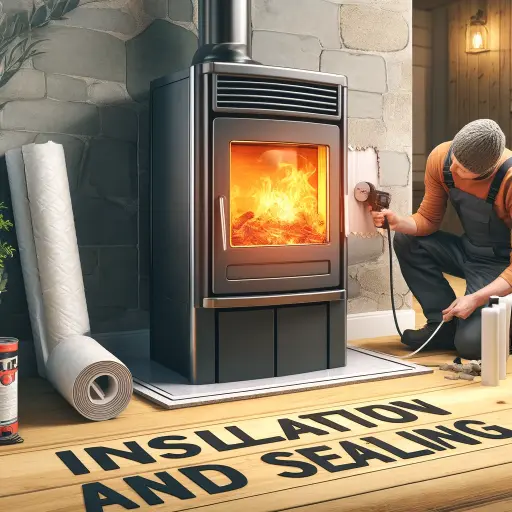
Evaluating insulation needs around the pellet stove area
- Assessing Heat Loss: Identify areas where heat may be escaping, such as windows or poorly insulated walls.
- Consider Flooring: Evaluate the floor beneath the stove for proper insulation.
Identifying and sealing potential air leaks for improved efficiency
- Caulking and Weatherstripping: Seal gaps around windows and doors to prevent drafts.
- Inspecting Chimney Seals: Ensure the seals around the chimney are intact to prevent air leaks.
Using heat-resistant materials for insulation
- Fireproof Materials: Utilize fire-resistant insulation to protect surrounding areas from heat.
Thermostat Usage
Understanding thermostat settings and their impact on heat output
- Set Temperature: Learn how to set your thermostat to achieve the desired level of warmth.
- Avoid Constant Adjustments: Consistent adjustments can lead to inefficiencies.
Programming tips for maintaining a comfortable yet efficient room temperature
- Set Temperatures Strategically: Program lower temperatures when you’re away or asleep, and higher when you’re active at home.
- Utilize Timers: Use timers to adjust temperatures based on your daily routines.
Mastering thermostat usage is crucial for maintaining a comfortable and energy-efficient home. Proper insulation and sealing further enhance the efficiency of your pellet stove. By following these steps, you’ll not only stay warm but also save on heating costs.
Utilizing the Blower Fan
Maximizing the effectiveness of the blower fan for heat distribution
- Positioning: Ensure the fan is placed to distribute heat evenly throughout the room.
- Clear Pathways: Remove any obstacles that might obstruct the airflow from the fan.
Adjusting fan speed for optimal airflow and temperature control
- Start Low: Begin with a lower fan speed and adjust as needed for comfort.
- Monitor Temperature: Keep an eye on the room’s temperature to find the ideal fan setting.
Room Placement and Air Circulation
Selecting an ideal location for the pellet stove in a room
- Central Location: Place the stove where it can radiate heat effectively throughout the space.
- Consider Airflow: Position it where it can draw in air for combustion without hindrance.
Arranging furniture to facilitate better air circulation and heat distribution
- Avoid Blocking: Ensure furniture isn’t blocking the flow of heated air from the stove.
- Create Open Pathways: Arrange furniture to allow air to circulate freely around the room.
Optimizing the use of the blower fan and strategically placing your pellet stove within the room are key strategies for achieving efficient heat distribution.
By following these steps, you’ll make the most of your pellet stove’s capabilities and create a warmer, more comfortable living environment.
Additional Heat Boosters
Exploring supplementary tools and accessories for enhanced heat output
- Heat-Reflective Panels: These panels can be placed behind the stove to reflect heat back into the room.
- Heat-Activated Fans: These fans help circulate warm air more effectively throughout the space.
Safety precautions and considerations when using heat-boosting devices
- Proper Installation: Ensure any additional devices are installed correctly and securely.
- Maintain Clearances: Leave ample space between the device and flammable materials to prevent accidents.
Troubleshooting Inefficient Burns
Common issues that lead to suboptimal burn temperatures
- Improper Pellet Quality: Low-quality or damp pellets can lead to inefficient burns.
- Insufficient Airflow: Obstructions or incorrect settings can hinder proper combustion.
Step-by-step solutions for addressing and resolving these problems
- Check Pellet Quality: Ensure you’re using high-quality, dry pellets for optimal burning.
- Inspect Airflow: Clear any blockages and adjust settings to improve combustion.
Being aware of additional heat-boosting tools and understanding how to troubleshoot inefficient burns are valuable skills for maximizing your pellet stove’s performance. By following these steps, you’ll ensure a consistently warm and comfortable living space.
Conclusion
In conclusion, optimizing your pellet stove for maximum heat output is a simple yet effective way to keep your home warm and cozy. By selecting the right pellets, maintaining your stove, and managing airflow, you can make a significant difference in its performance.
Additionally, strategic placement, proper use of accessories, and troubleshooting techniques are key to ensuring your stove operates at its best.
Remember, a well-maintained pellet stove not only enhances comfort but also contributes to energy efficiency and cost savings.
So, apply these tips and enjoy a warmer, more inviting living space throughout the chilly seasons. Stay warm!